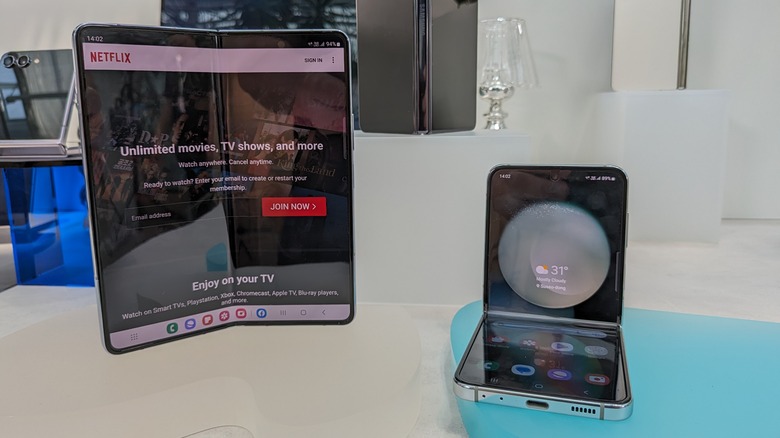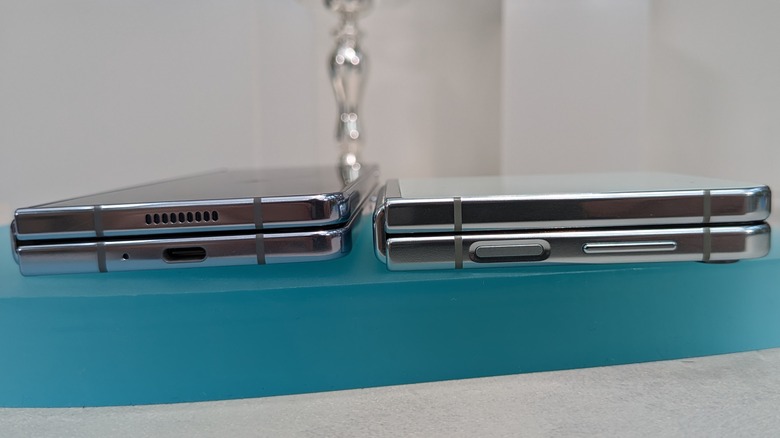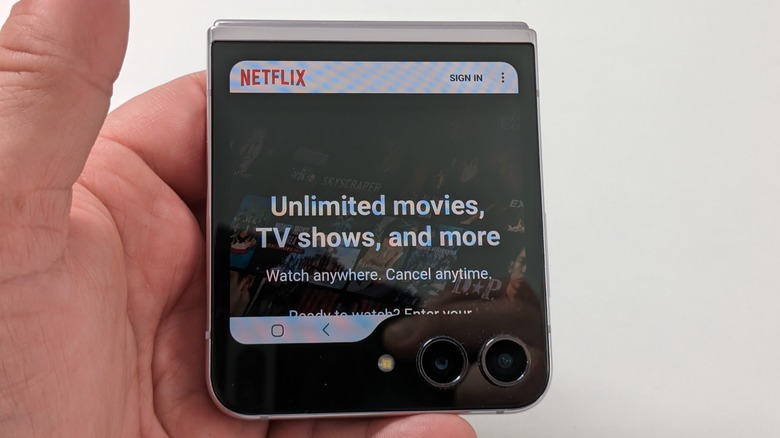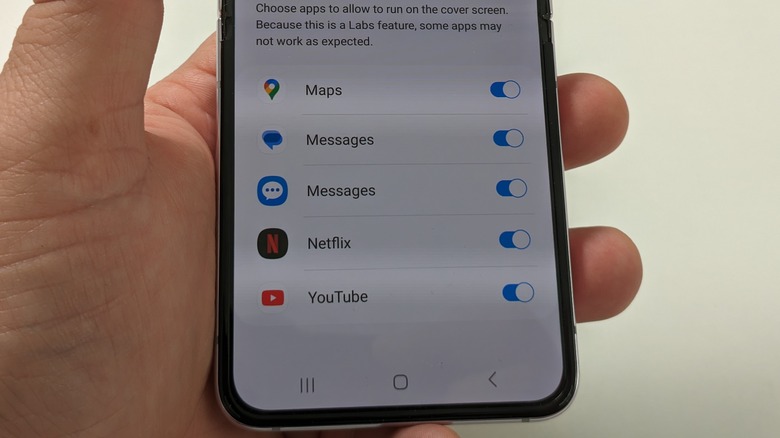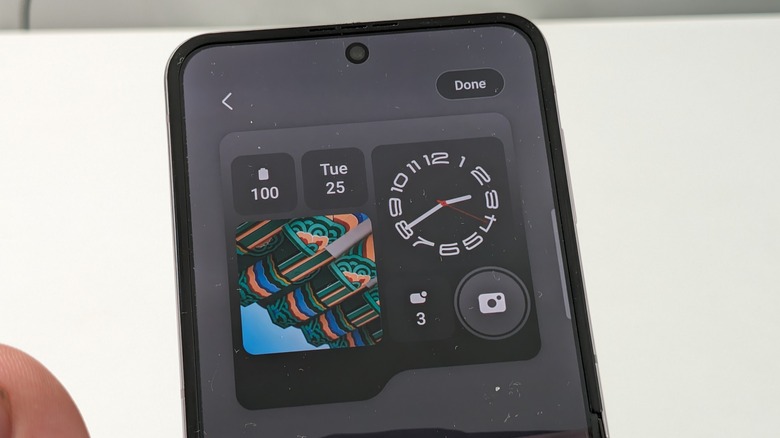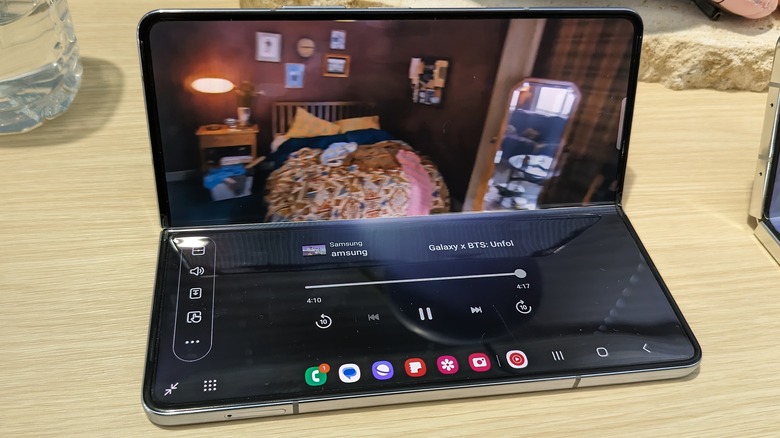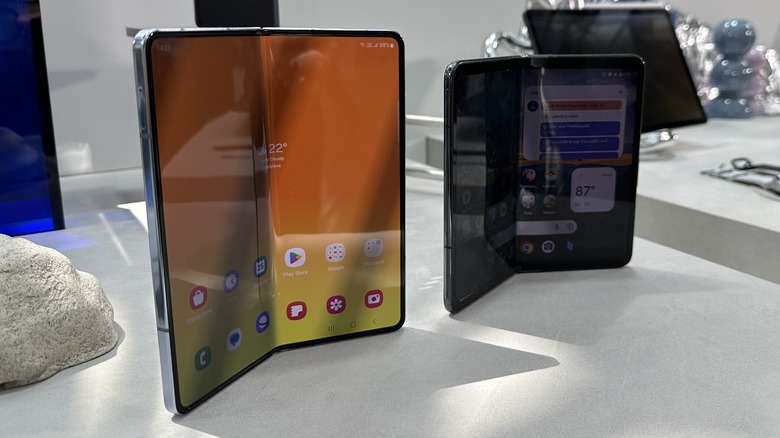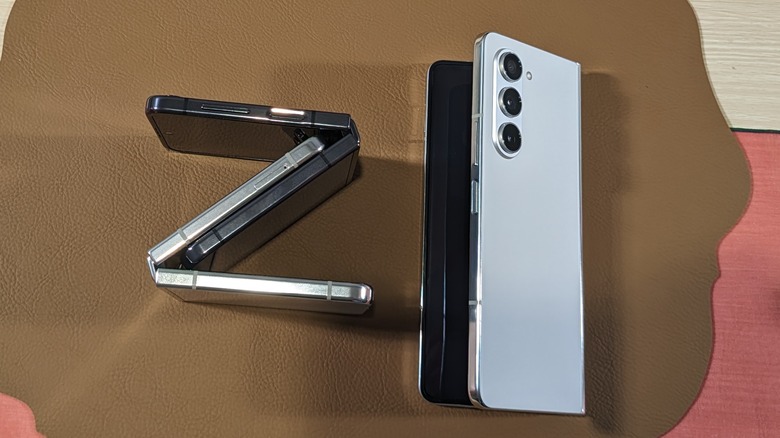Samsung Galaxy Z Fold 5 And Galaxy Z Flip 5 Hands-On: Forced Evolution
Samsung launched its latest foldables to the market at its Unpacked event, held for the first time on its home turf — Seoul, South Korea. These two phones are launching under unique circumstances to previous launches. Today, Samsung faces its first real competition in the foldable space with not one but three other competitors bringing foldables to the North American market.
This year, we have already seen foldable competitors in the form of the Motorola Razr Plus and the Google Pixel Fold, and rumors suggest OnePlus will compete in this space before the summer is over. Suddenly, Samsung has gone from owning the market to simply having a slice of the market.
Samsung's early entrance will definitely give it some wiggle room, but for the first time in five years, Samsung has meaningful competitors stateside, so these foldables represent a new era in the space. Samsung needs to start paying attention to the world around it. We went hands-on with both of Samsung's new foldables for two hours in Seoul, South Korea, and here are our first impressions.
Flatter is better
The first thing you'll notice about Samsung's previous generations of foldables is how similar they look to each other. That tradition continues with the Fold 5, because there's only one way to tell the difference between it and its predecessor at a glance. It is a big difference — the Fold 5 now folds flat (as does the Flip 5), with no gap at the hinge.
This is a major upgrade in the form of aesthetics and functionality as it allows the Fold 5 to look better when it's closed, and it allows the Fold 5 to be thinner without the hinge gap. The Flip 5 also folds flat, but it's a much more noticeable upgrade on the larger sibling.
That being said, with basically every other foldable in the world folding flat, this was a mandatory change for Samsung, so it's good to see the company step up to the plate in that regard. Had Samsung not gone this route, one may have suggested that Samsung was depending on its unique look and feel to stand out, but that argument would have fallen flat, to entertain the pun. Put simply, this was something that Samsung needed to make work.
The need for change
Moving back to the Galaxy Z Flip 5, the major noticeable change is in the cover screen which is huge, as it should be. Motorola set that standard earlier this year with the Razr Plus, plus other flip-style foldables that have been gradually increasing the cover screen. It's good to see Samsung keep up in this regard as well.
The cover screen is not as large as that on the Moto Razr Plus. Samsung stopped short of surrounding the cameras with the screen, meaning you can't take hilarious photos of yourself with big eyes. Rather, there's a sort of notch at the bottom that allows space for UI controls in certain apps. It's not unattractive, but it's not as "complete" an experience as what Motorola offers.
We'll discuss that complete experience in the next section, but suffice it to say, this was a mandatory step, and Samsung is handling it with careful deliberation as we'll see. But, from a very high level, this was not something that Samsung could afford to not do, especially given Motorola's competition in this space.
A more curated solution
That being said, how Samsung is handling the cover screen may not be for everyone. Samsung is taking a very anti-Motorola approach to this cover screen. While Motorola wants you to do everything on the cover screen, Samsung says, "Not so fast. Maybe you shouldn't do everything on there." In a sense, Samsung is both right and wrong. Samsung is right because, to be perfectly frank, the cover screen is not where you should do all your phone tasks. A large cover screen is great for doing a lot of tasks, but you can't just superglue your phone shut and call it a day.
Motorola would love for you to try that. This is evident by the fact that you can pick and choose which apps to run on the cover screen simply by populating your launcher. Samsung makes you jump through some hoops to make it work. First, there's a curated list of five apps (so far) that Samsung has optimized for the cover screen. Those are Maps, Netflix, YouTube, and hilariously two different Messages apps — Google's and Samsung's.
Good Lock brings it, if you want it
Additionally, users can configure other widgets to populate the cover screen including weather, calendar, and the usual fare. This leads to a more refined, curated experience on the cover screen, as opposed to the chaos of Motorola's "go ahead and give it a try" philosophy. It should be mentioned that Samsung said that users will be able to use Good Lock to bring more apps to the cover screen, Moto-style, but that's hidden behind multiple steps that the vast majority of users will not know about, will not care about, or will not bother to explore.
You might prefer Moto's way of going about it — it's your phone, do what you want. But Samsung's way is not wrong here. It stands to reason that the same nerds who want to run "Call of Duty: Mobile" on their cover screen will not mind jumping through a hoop or two to get it.
Flexing with Flex mode
Moving back to the Fold 5, Samsung is continuing to improve and refine the software experience on the larger foldable. Specifically, Flex Mode is getting a new trick that allows you to move a lot of the UI for supported apps, Like Youtube and Netflix. When you run an app like that in Flex mode, the UI moves down to the bottom of the screen. But there's also a button to bring up a more refined UI for the bottom screen.
In addition to play controls, you can expand further controls on the bottom screen such as volume controls and the touchpad feature that was previously available on the Galaxy Z Flip 4. This touchpad allows you to move a mouse cursor around the screen for fine control of your media. A two-finger scroll lets you scrub through the footage on a video with more accuracy, which is certainly appreciated.
The more things change
One additional takeaway from the Galaxy Z Fold is just how similar it is to its predecessor, and that's most notable in the width of the cover screen. It's still extremely tall and narrow which makes the phone hard to use when closed with more than one hand. There are two very definitive schools of thought on this design. Some foldable phones like the Honor Vs embrace this design, while others like the Google Pixel Fold and the Oppo Find N embrace a wider cover screen that makes it more "phone-like" when closed. This debate is far from settled, but while the Moto Razr Plus calls using the phone closed a value proposition, that's an attractive feature on the Pixel Fold as well.
The taller, thinner aesthetic makes the phone easier to use with just one hand, which is a compelling argument. You also end up with a larger inside screen under Samsung's configuration. Which side you end up on will be up to you to decide. An argument could be made either way, but the trend seems to be leaning toward larger cover screens, so Samsung should certainly pay attention to this trend and react accordingly.
The more things stay the same
It's no secret that smartphone development is a months-long process, so it wouldn't be fair to suggest that the Samsung Galaxy Z Flip 5 is a "reaction" to Motorola's Razr Plus. But now that competitors have tipped their hands, Samsung can start to plan and/or alter plans for next year's devices accordingly. What's clear is that Samsung has a huge advantage in the foldable market, especially in the United States. Sure, there's a lot more competition, but Samsung is also on its fifth generation of foldable, and has thus far dominated the market. Actually, it would be more fair to say that it has defined the market. Put simply, Samsung is not "in trouble."
But there is more competition now, and Samsung is going to have to react to that competition. This generation addresses the one major physical change that was needed — the fold gap — and it has added some functionality to make its devices better, especially on the Galaxy Z Flip 5 and its larger cover screen.
We'll need to wait for our full reviews to determine exactly where Samsung stands, but at the moment, it's fair to say that Samsung is working from a position of strength, and has done a lot to advance its cause. But whether or not it has done enough will be interesting to watch. The thing that's most exciting here is that 2023 has been a great year for foldables in the U.S. and Samsung is definitely holding up its end of the bargain.
